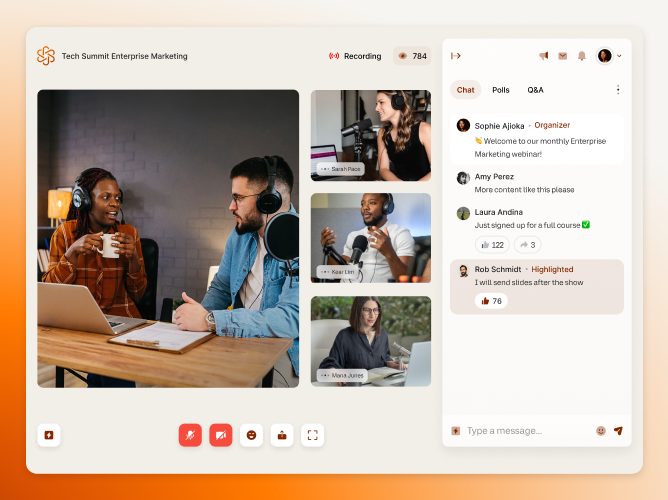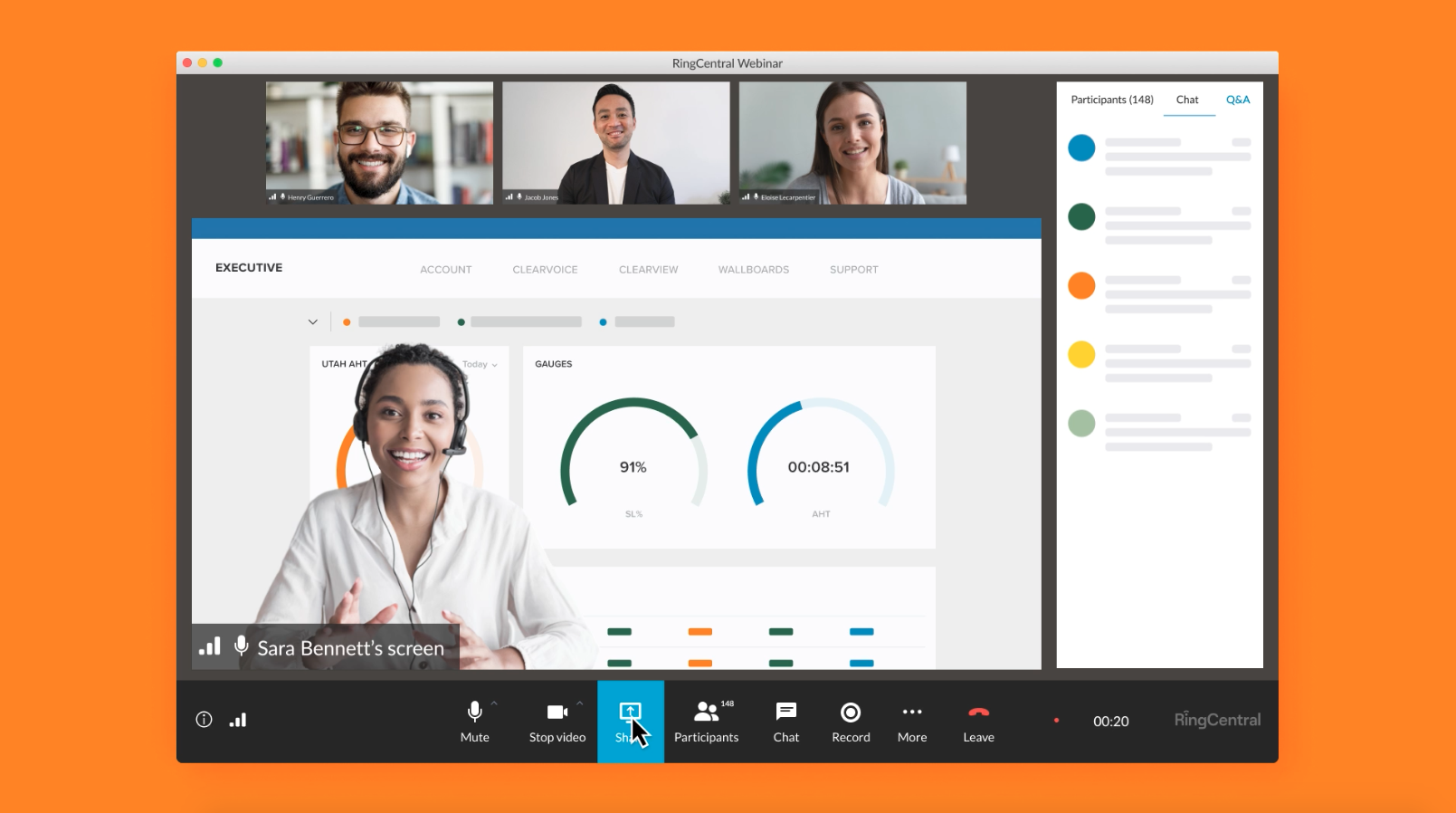The success of an event depends on its attendance—and attendance is almost entirely a product of promotion.
Whether virtual, hybrid, or in-person, events involve a non-trivial investment in time, money, and effort. This is for good reason, as events are a uniquely effective way to grow brand awareness, generate interest in your product offering, and engage your target audience.
To justify that investment, however, it is imperative to attract the widest possible audience—as a way to scale costs and maximize the ROI for your event.
Virtual and hybrid events have inherent advantages when it comes to expanding your audience because they allow for greater reach: Attendees can join from anywhere in the world, and organizers aren’t restricted by venue size or travel & accommodation budgets.
Nonetheless, to realize that attendance potential, you need a solid event marketing plan that creates awareness and excitement around your online event.
Here are nine ways to promote your next virtual event.
🤝 Embed RingCentral Events into your HubSpot marketing workflows with the RingCentral Events-HubSpot integration. Learn more here.
9 ways to promote your next virtual event
- Co-host the virtual event with another company
- Create a compelling landing page
- Support your landing page with paid promotion
- Call out your virtual event on your thank you pages
- Surface your virtual event on your website with a slide-in CTA
- Send an email to your contact list
- Build excitement on social media
- Offer an incentive to registrants
- Provide your live virtual event as an on-demand resource
1. Co-host the virtual event with another company
Is there an organization you would like to collaborate with that shares a similar audience? If so, it could be beneficial to co-produce and market an event with them.
Co-marketing is a marketing practice where at least two companies collaborate with separate distribution channels to promote a co-created piece of content.
You could do this one of two ways:
- Co-host a full event with another company
- Host a single session like a panel with members from other businesses
💡 Pro Tip: Consider creating a co-branded offer that lives past the event. For example, you might produce a checklist or template that both companies can host on their websites as a lead generation opportunity.
2. Create a compelling landing page
Make the landing page where people register for your event informative and exciting. On your landing page, be sure not to detract from your CTA, so you can optimize for the most registrations.
For example, let’s review the landing page for the ContentTECH Summit and some key insights that you can use to create a landing page for your event.
The page shows the following content above the fold (what you see on the page before you scroll down):
- Compelling image
- Title of the event
- Clear call-to-action to register
- Event date
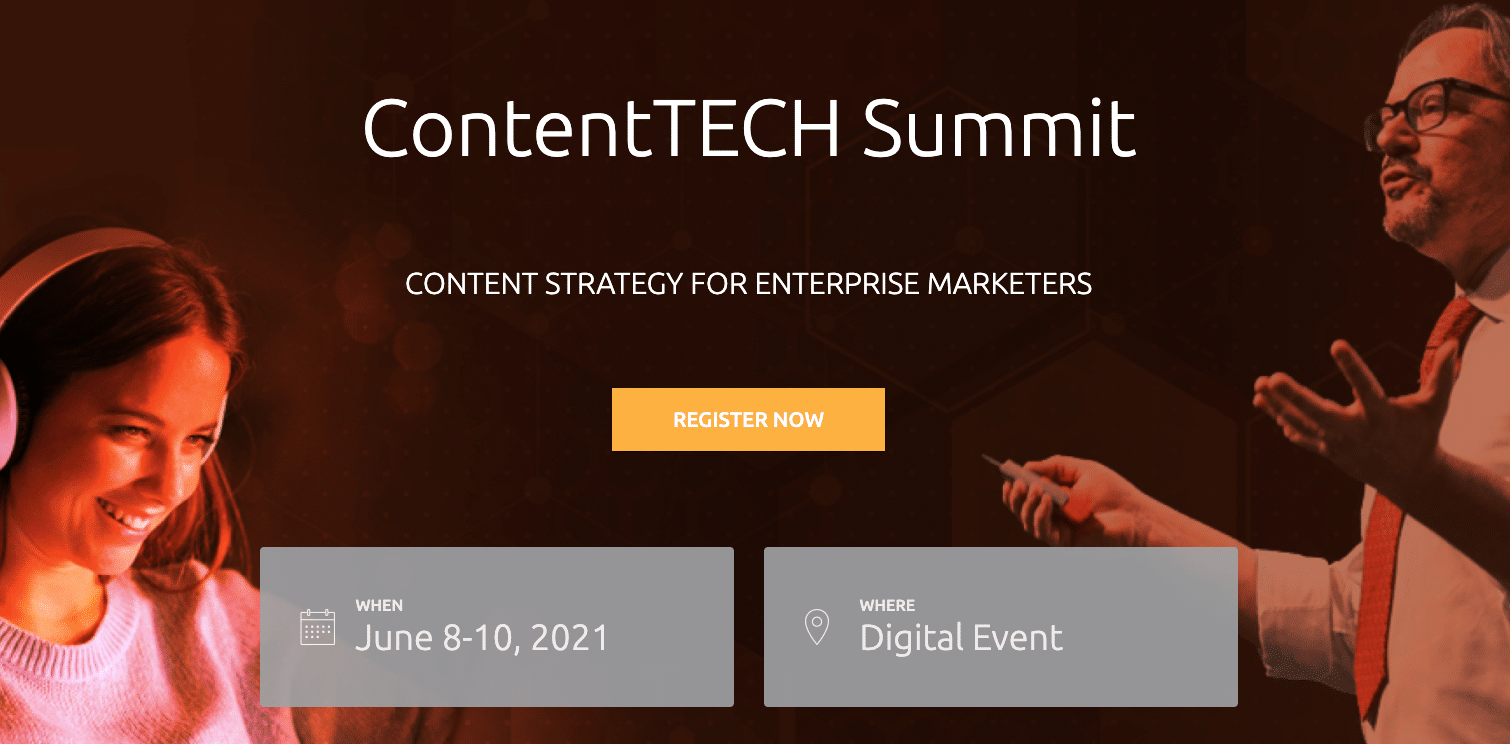
As you scroll down the page, you find more details, such as:
- Two paragraphs providing an overview of the event
- A short video highlighting the event details
- A three-column section explaining why the event is important, who should attend, and what value it will provide
- A high-level overview of speakers (with links to pages to learn more about their expertise)
- Trending news and updates about the event
💡 Pro Tip: If this is an annual event or an event you plan to offer as an on-demand resource, consider optimizing the page for relevant keywords with monthly search volume intent.
If your goal is to get this page ranking on search engines before the event happens, consider publishing it at least two to three months in advance as it can take time to show up on the first page of search engines like Google.
3. Support your landing page with paid promotion
If the event you host has a unique name and will be hosted on an ongoing basis, then consider promoting it via Google Ads. You can keep costs low by bidding only on the exact name of the event.
For example, SEO software company Moz hosts an annual conference known as MozCon. Notice how the first thing you see when searching for “MozCon” on Google is a paid listing for the event from Moz.
Also, notice how the second paid listing is from Moz’s competitor. Supporting your landing page with search ads can help keep your event (and brand) in the most prominent position on search engine result pages.
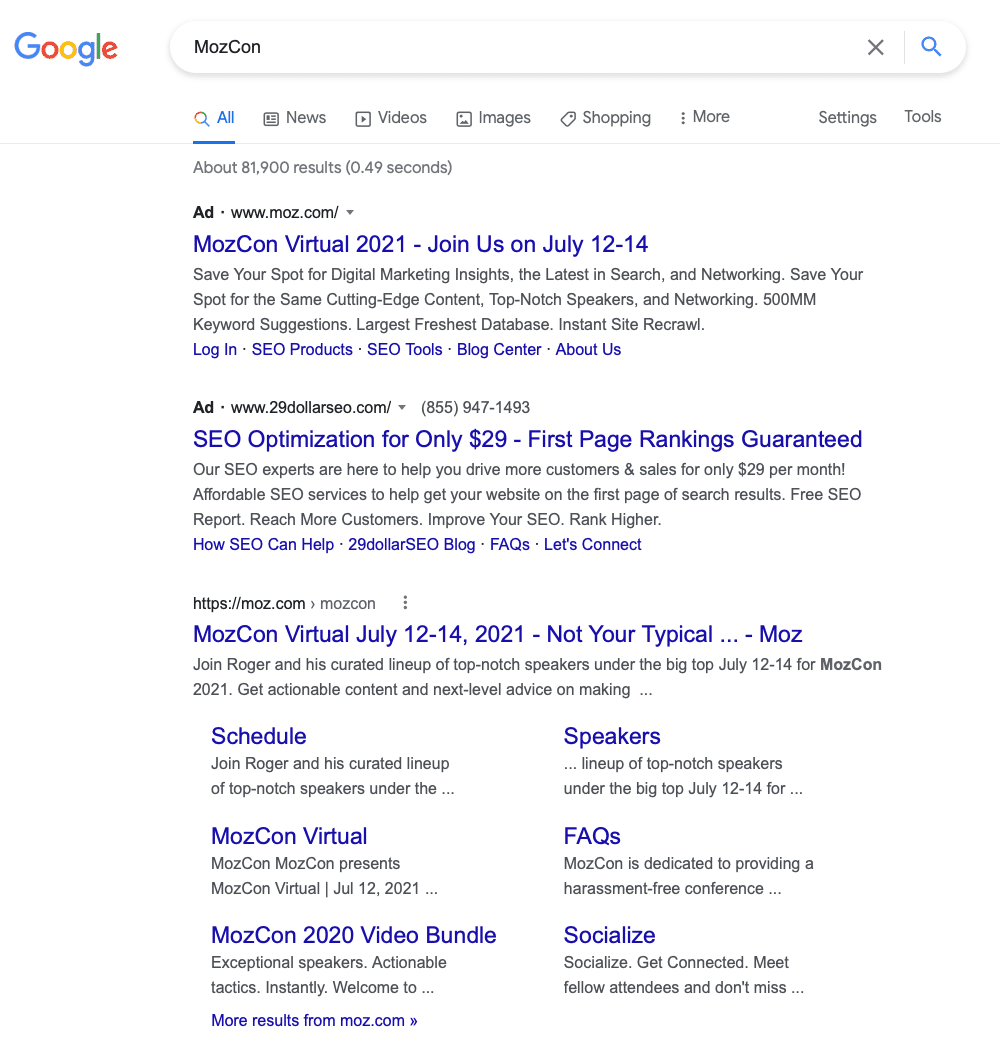
4. Call out your virtual event on your thank you pages
People who convert on your site are taking the first step toward building a relationship with you.
No matter what the conversion is—accessing a content offer, getting in touch with sales, etc.—thank you pages are a prime opportunity to keep the conversation going with another offer (in this case, your event).
For example, look at this landing page from HubSpot for their content marketing workbook.
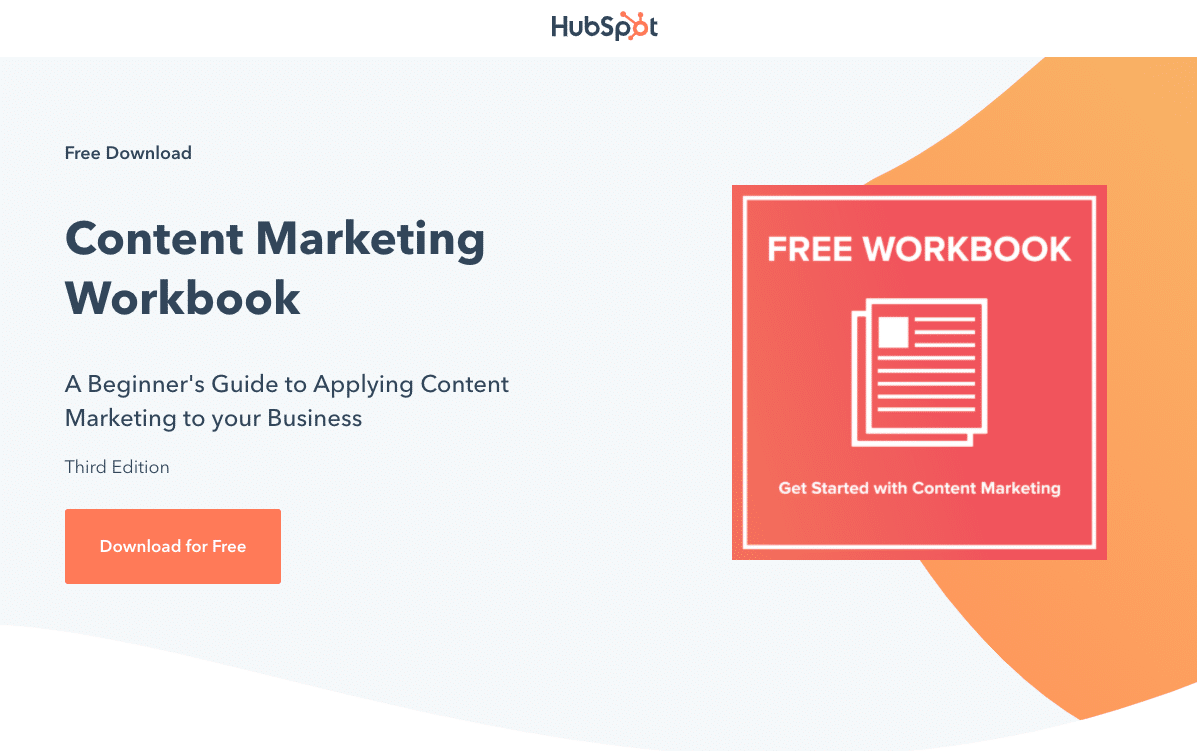
Once someone completes the form to access the content, this is what the thank you page looks like.
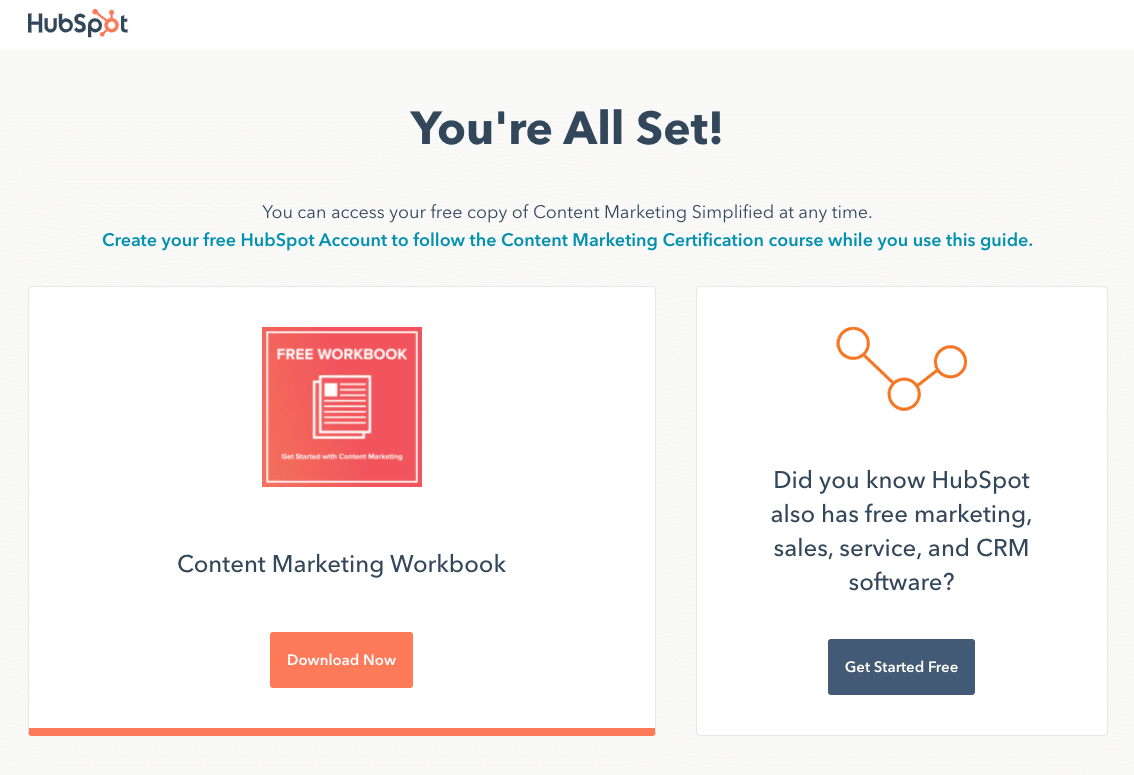
Notice how the thank you page shows the content offer on the left as well as a secondary offer on the right.
💡 Pro Tip: When someone converts on your site, consider sending them a follow-up email with the same tactic seen above. For context, below is the follow-up email for people who fill out a form to access HubSpot’s content marketing workbook. Notice the “where to go from here” section.
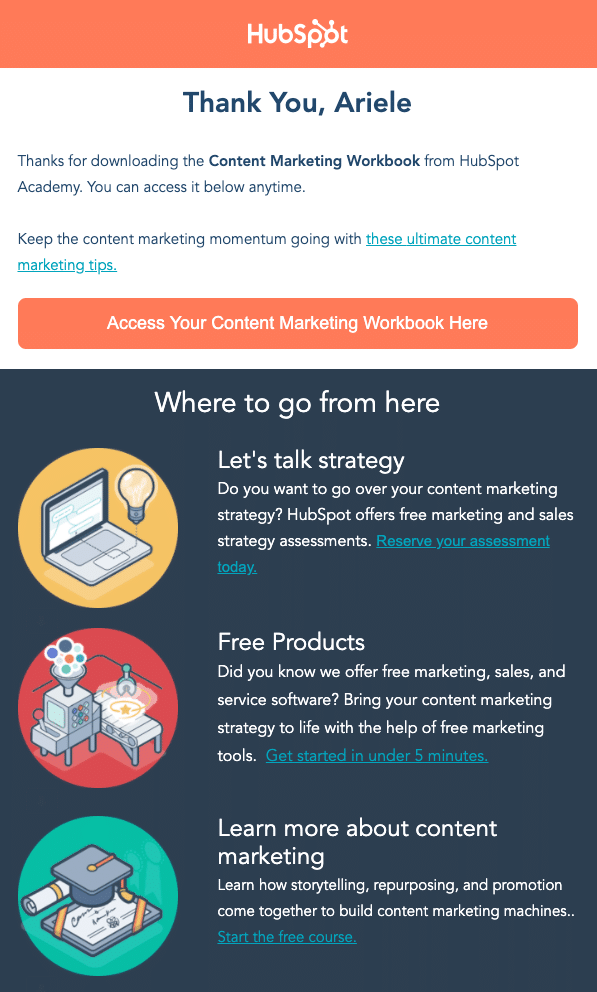
5. Surface your virtual event on your website with a slide-in CTA
If your website attracts a consistent flow of visitors, consider identifying your top-trafficked pages and add a slide-in call-to-action.
Slide-in calls-to-action appear as you scroll down a website page. They’re effective because they’re not static, meaning they follow you through a website page.
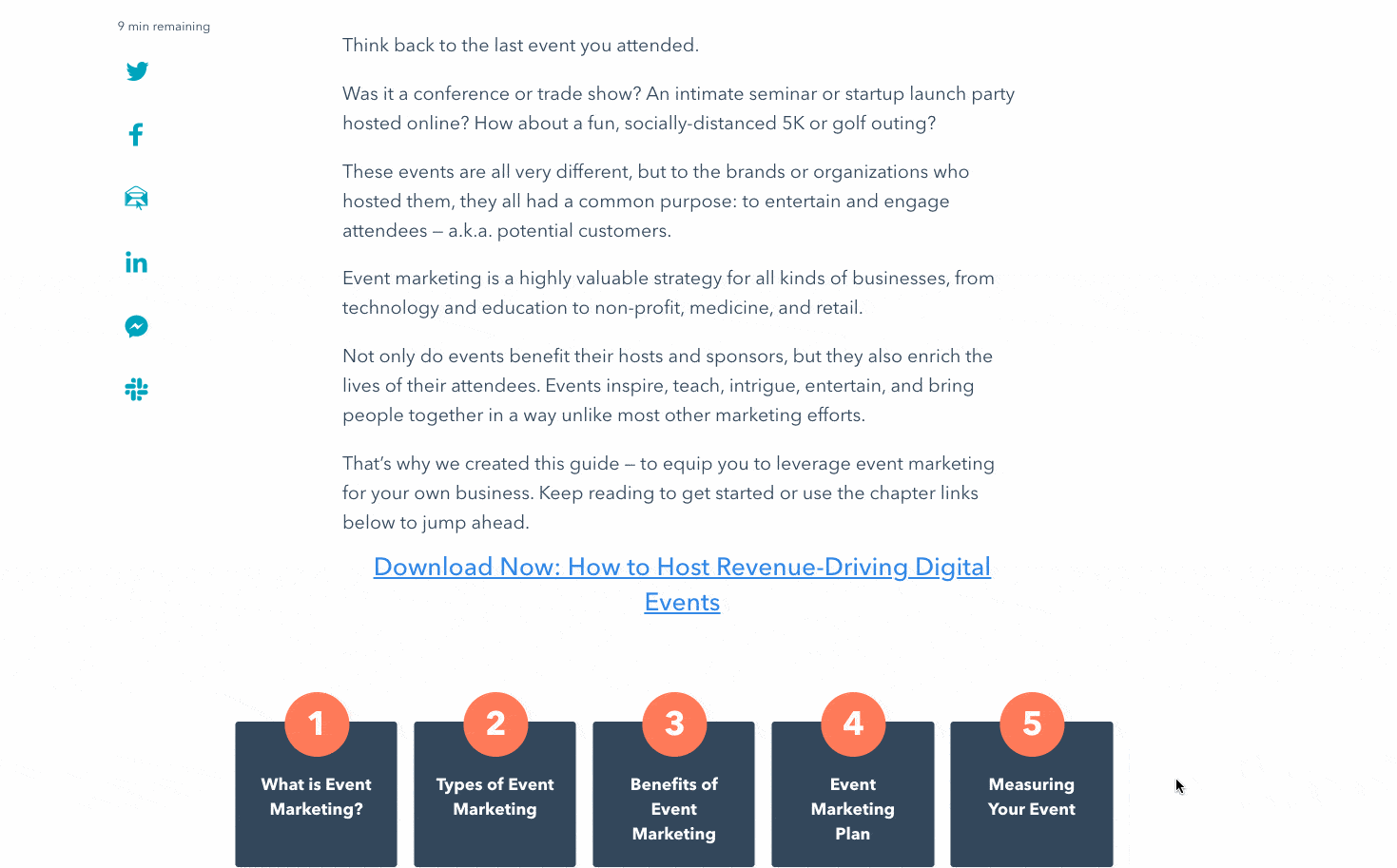
💡 Pro Tip: Slide-in calls-to-action are meant to provide a less disruptive experience to website visitors than a pop-up call-to-action that you have to click out of. Keeping this in mind, consider having the slide-in appear once a person scrolls 25% of the way through your page.
6. Send an email to your contact list
Email is a tried and true messaging channel to keep people informed. 83% of marketers use email marketing to promote content like events.
Consider sending an email to:
- Customers
- Prospects
- Partners
- Employees (Yes, send an email to your employees, especially those who are customer-facing.)
When sending emails to promote your events, you can either highlight one event or a calendar of upcoming events. Let’s see what this looks like in action.
Below is an email promoting an upcoming event for Harvard’s Division of Continuing Education. Notice how the email:
- Offers a description of the event
- Uses bold to highlight key points
- Highlights guest speakers and their roles
- Explains an overview of the event and what a participant will get out of it
- Offers a “Register Now” call-to-action that’s easy to see
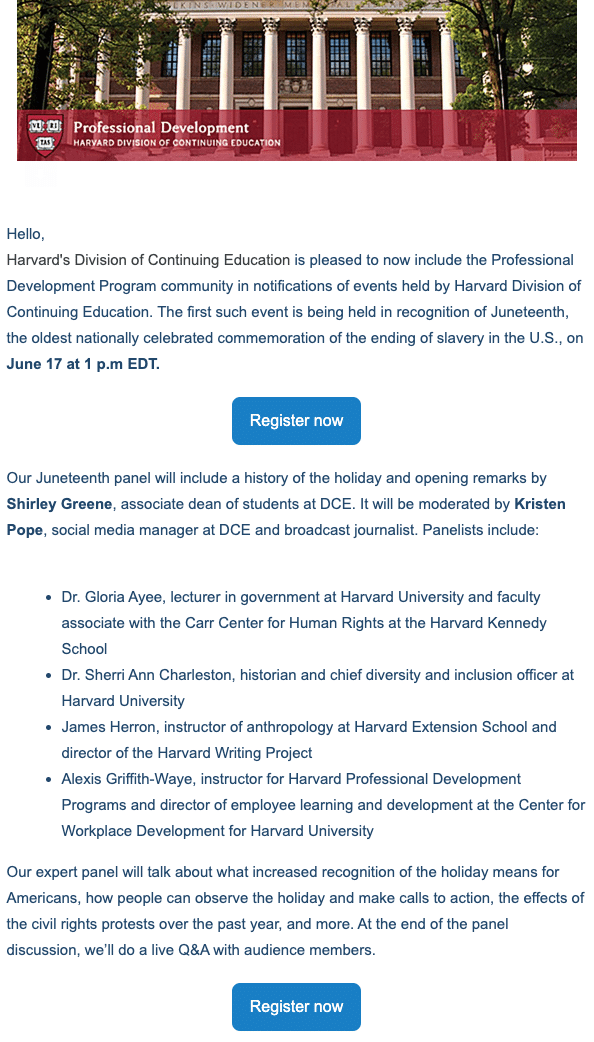
Below is an email promoting a series of upcoming events for the online learning company, Reforge. Notice how the email offers concise descriptions with clear calls-to-action to RSVP.
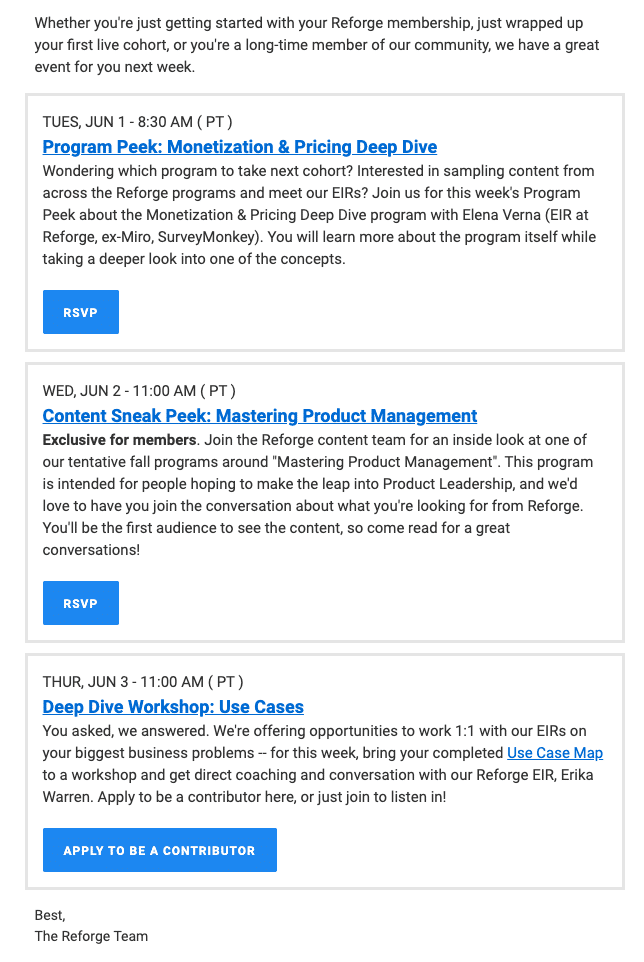
💡 Pro Tip: Consider sending a second email with a refreshed subject line to those contacts who didn’t open the first email. This can help maximize your click-through rate. Here’s what this could look like:
- One email to a relevant contact list (30 days before the event)
- One email to those on the same list who didn’t open the first email. Use an updated subject line (15 days before the event).
7. Build excitement on social media
Social media is rarely a one-and-done promotion channel. There’s more value to be had than just publishing an announcement post. Here’s a list of best practices to consider to get the most out of your social media efforts:
- Choose your channels: The best social channels to promote your event organically are where you are most connected with your audience. LinkedIn posts and Instagram Stories are the author’s top picks because you will be able to reach the followers who engage with you and who are most likely to attend.
- Decide on a unique event hashtag: And start using the hashtag as soon as you start promoting your event. Additionally, make the hashtag visible the day of the event and encourage people to use it when posting to their social channels.
- Promote using unique social content: Examples of this include highlighting a guest speaker (and tagging them) or collecting questions for a live Q&A with a guest speaker.
- Use an incentive: If you’re offering an incentive for people who attend the event, build excitement by telling people about it and its value.
💡 Pro Tip: To maximize your event announcement post, consider:
- Posting a short video
- Inserting a clear call-to-action with a link to a landing page to register
- Including one or two emoji to make it fun and casual
- Boosting the event (via social post or paid ad) to a relevant audience (current audience, prospects, etc.) with paid spend
8. Offer an incentive to registrants
The average no-show percentage of virtual events can be 35% or higher, which is slightly higher than in-person events. Keep things interesting by offering a giveaway to encourage registrants to attend the event.
💡 Pro Tip: Instead of offering something generic like a tablet, consider offering an incentive that aligns with your business, such as a free consulting call or a month of service for free. If you want to delight all attendees, then you could consider extending a one-time discount that’s valid for the following 48 hours.
9. Offer your live virtual event as an on-demand resource
The promotion for your event doesn’t have to end once it’s over. Registrants who don’t attend your live event—or net new visitors—may be interested in watching your event on-demand. Keeping this in mind, you could offer the on-demand event as a lead-generation resource for your website.
For example, notice how the offer on data axle’s landing page is an on-demand webinar.
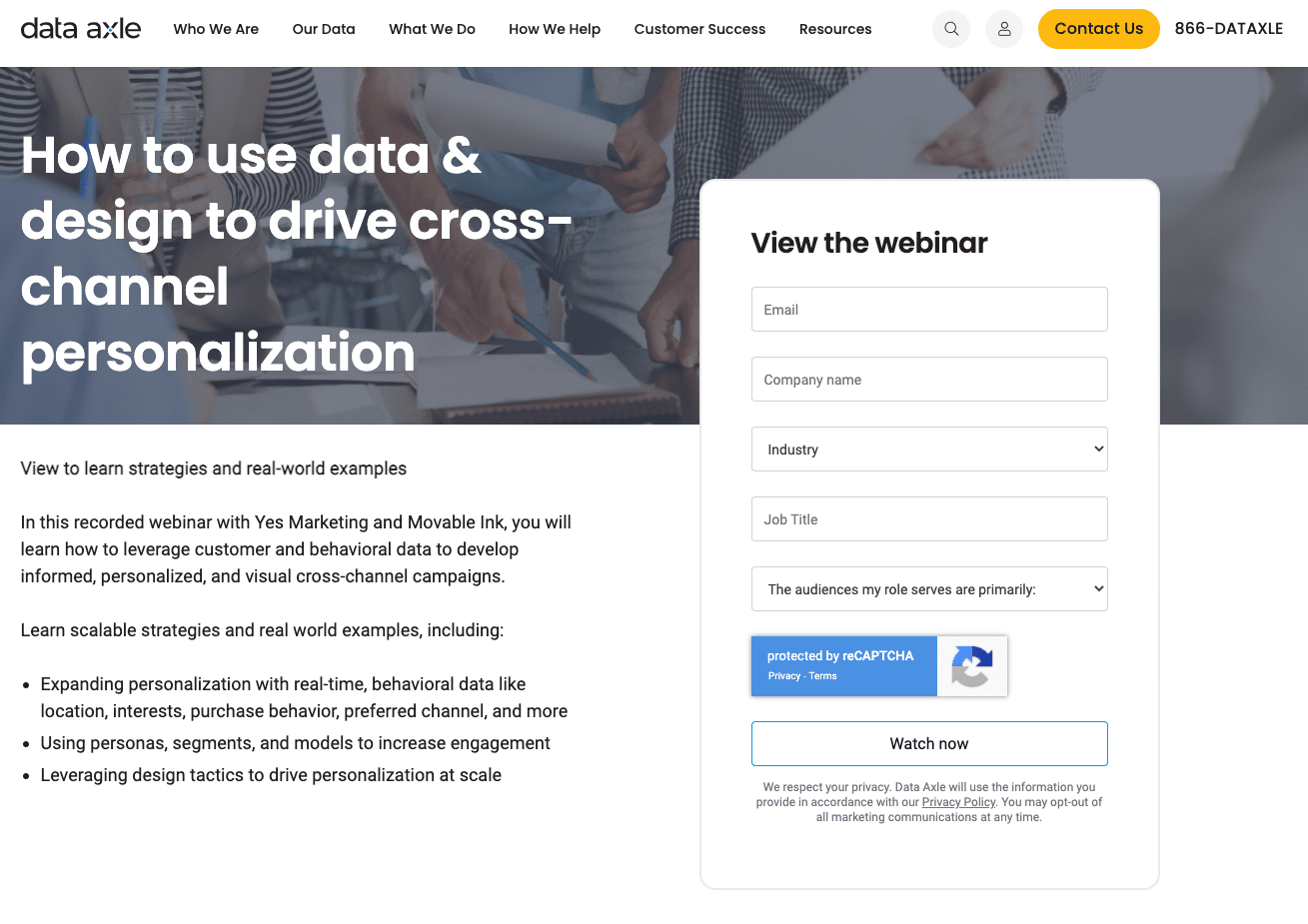
💡 Pro Tip: Instead of creating a new landing page for your on-demand resource, consider converting and SEO optimizing the landing page from your live event. This way you can take advantage of the value you built while promoting your live event.
Every virtual event is unique—promote accordingly
The important thing to remember with promotion is that there are a variety of levers that you can use to promote your event.
The key thing to remember is that your promotional efforts should be oriented around where your target audience already is. Prioritize those channels where you are likeliest to reach and engage the people for whom your event is relevant.
The ideas in this article are a starting point as you build your promotional plan, but don’t be afraid to think outside the box. As with all things marketing, the best way to learn is by trying.
Keep experimenting and optimizing to improve your promotional efforts for your virtual events and other business initiatives.
Updated Mar 13, 2025








